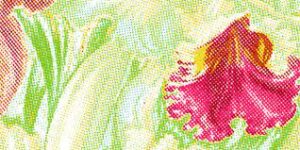- October 15, 2022
- Posted by: Andrew
- Category: Uncategorized

Separating a color graphic or photograph into monochrome layers is called color separation. For example, to print a full-color photograph using an offset press, it must first separate the photograph into four basic ink colors
Cyan, magenta, yellow, and black (CMYK). Each solid color layer is printed separately and overlaid for lasting color impressions.
Color separations that create an infinite number of colors by mixing 3 or 4 colors in this way are called process color separations. Another type of color separation, called spot color separation, is used to separate colors that should not be mixed. In this case, each spot color is represented by its own specially mixed ink. Spot colors are useful for enhancing text but cannot be used to reproduce full-color images.
Traditionally, the color separation of the process was done photographically using different color filters. However, many modern desktop publishing systems can now produce color separations of electronically stored graphics. This feature is essential when creating full-color documents on your computer and printing them using an offset printer. If you print directly to a color printer, you don’t need to perform color separations because the printer itself performs color separations internally.
However, four types of color separations are commonly used in screen printing:
process color
The process of color separation includes the method used for printing CMYK colors, 4 primary colors are used to print colorful product images and actual images. Process color separations are done by placing halftone dots on any surface.
special color
Spot colors are the most commonly used color separation method. They are mainly applied to garment products to print single-color logos, artworks, etc. Vector-based software such as Adobe Illustrator is used for spot color separation work.
Simulated process colors
This is often referred to as bad CMYK and channel separation. This method creates the look of process colors, but applying spot colors completes the separations. It covers all important shades. Color separation by a simulated process is done in software such as Photoshop.
index color
Color separations of the index are performed for the sample print and the graphic print. Therefore, halftone dots are used to create random patterns called stochastics. This will print a high-quality image.
Color separation software:
Many online and offline tools are used for color separation. Adobe Photoshop, Adobe Illustrator, Corel Draw, etc., is mainly used. Graphic designers use Adobe Photoshop to separate colors from raster or real images, and image editors use Illustrator and Corel Draw to colorize vector graphics.

To perform color separations:
Tutorial
Here’s a tutorial on color separation in Photoshop.
Step 1:
For color separation, open the multicolor image in Photoshop.
Step 2:
Take the number of colors and take the empty layer accordingly.
Step 3:
Grab the eyedropper tool from the left toolbar. Click a color in the image, go to Select at the top, click Color Range, and click OK. A color is selected. Step 4:
Click an empty layer and press Alt + Backspace on your keyboard. You can see that the color clicked with the eyedropper is copied to the empty layer. To check, hide the main image layer.
Step 5:
Press Ctrl + D to deselect. This allows you to separate all colors from the image. Color separations is essential in the printing industry, especially in textile printing. Graphic designers and image editors need to learn the color separation process. It is neither difficult nor too easy. Requires the keen eye power needed to distinguish between multiple colors.
Color separations is a tough skill, but it really helps get your printing a new and more efficient look. You are elaborating on the colors and making them completely prominent. Several great applications can help you improve and do it more particularly.
